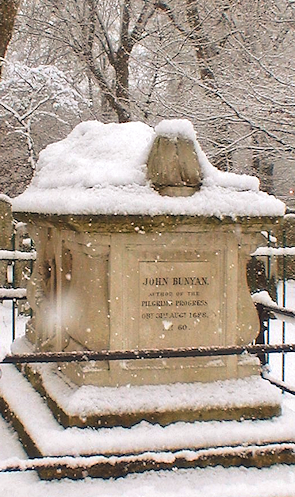Bunhill
Bunhill, Islington
An electoral ward that takes its name from a renowned Dissenters’ burial ground at the southern end of City Road

Bunhill Fields – which is a corruption of Bone Hill Fields – had been associated with interments since Saxon times and became a Quaker burial ground in 1665, the year of the plague. It was popular with Dissenters of various denominations because the ground was unconsecrated.
By the 1800s the graveyard had seen 12,000 burials and had become so overcrowded as to constitute a health hazard – or at least so it was thought at a time when the miasma theory held sway.
In response to the congestion a Nonconformist burial ground called New Bunhill Fields was opened in Southwark, at a site now occupied by the Globe Academy. The cemetery operated from around 1821 to 1853 and at least 12,000 burials took place here too. In addition, a Nonconformist burial ground called City Bunhill operated at Golden Lane between 1833 and 1853.
The original Bunhill Fields closed in 1863 and the Corporation of London subsequently took over its maintenance. Part of Bunhill Fields was laid out as a garden in 1960.
John Bunyan, William Blake and Daniel Defoe are buried here, but their memorials do not mark the precise sites of the graves as there has been so much disarrangement.
In the electoral ward of Bunhill 43 per cent of residents are white British. There are also significant numbers of ‘other Western European whites’ and people of Chinese origin or descent – which is nowadays often an indicator of an abundant student population. (City University is nearby.) The majority of residents live in rented accommodation. Two-thirds of households have no access to a car.
John Milton lived in Artillery Row, now Bunhill Row, from 1663 to 1674. Here he completed Paradise Lost and wrote its sequel Paradise Regained and the poetic drama Samson Agonistes.
Postal district: EC1
Population: 14,639 (2011 census)
Further reading: Susan Black, Bunhill Fields: The great Dissenters’ Burial Ground, Brigham Young University Religious Studies Center, 1990
